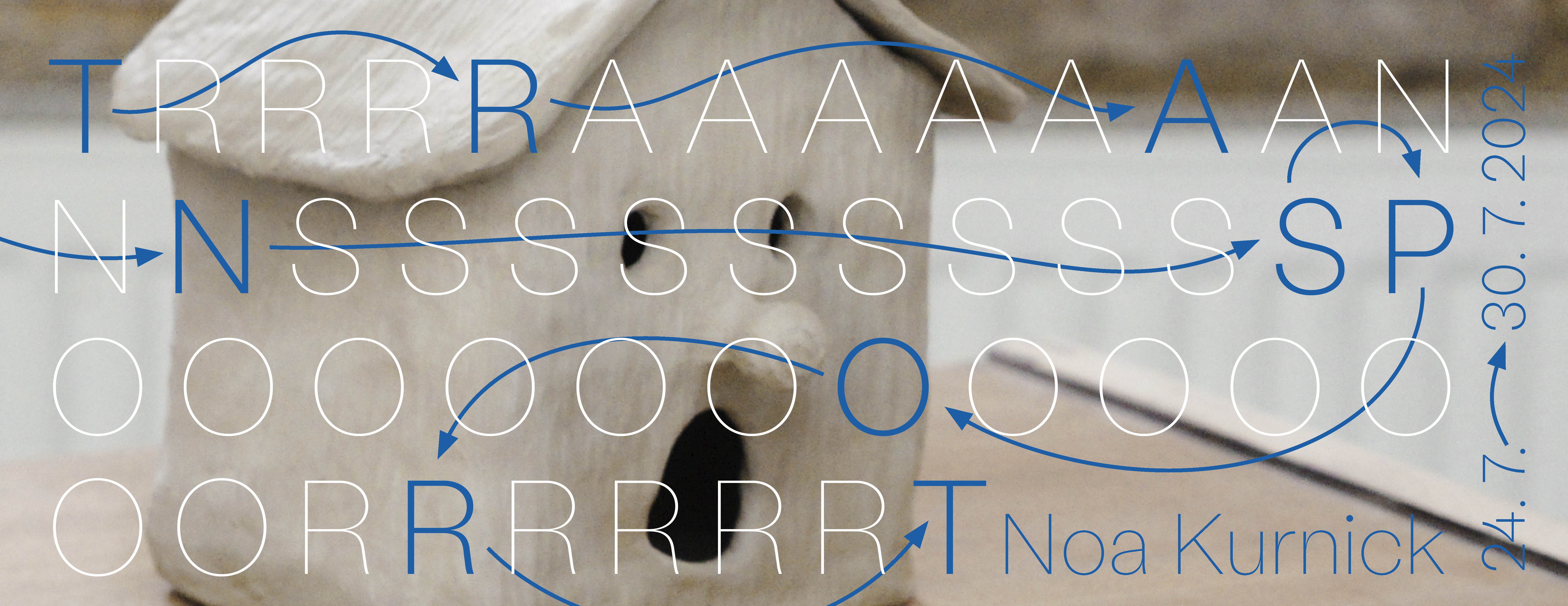Rezident
Noa Kurnick: Trrrraaaaannnssssssspoooooorrrrt

We are inviting you to the exhibition Noa Kurnick: Trrrraaaaaaannnssssssooooooooorrrrrrt, curated by Šárka Koudelová.
opening of the exhibition: 23. 7. 2024 / 18:00
exhibition: 24. 7. – 30. 7. 2024
exhibition: 24. 7. – 30. 7. 2024
A car, a camel, an excavator, a boat, roller skates, a bicycle, but also a rescue stretcher, a tank, a police anton or a wheelchair. The means of transport, whose childlike stylisation and the material qualities of clay combine to create a poignant tragicomic, introduce Noa Kurnick’s exhibition and represent souvenirs that are destined to be taken all by the public after the exhibition. The word transport evokes a similarly ambivalent emotional response as the purpose of the individual vehicles – as the title proves, it can be both a simple calligram to get us from place to another and an authoritative call to board, evoking the most tragic period of jewish history. A similar straddling between child’s play and chilling moments runs throughout the exhibition, and despite the natural functionality of the opposites, it is surprising how close they can be.
One of Noa’s older works is a Star of David made of white powder on a silver tray. It represents the irony with which Noa approaches the official image of the society she grew up in, which is continuously “high on identity”. Family histories become politician and safe familiar faces are turned into generic emoji masks. Personal passport photographs of individual family members are encircled by subtle installations that look like thoughtless compositions of objects on a table, mixing keepsakes of family members with haphazardly dropped trinkets, educational children’s toys and pieces of family silver. Cigarette ash and butts, which are part of several installation situations, combine thoughtlessness with a conscious conceptual approach – at times they look like an accidental trace left behind by a smoked cigarette, at other times they are, along with the inseparable self-harming comfort they bring, the basic building material of the objects. The only pure shade of colour that recurs in an otherwise ashy, clayey and sandy tones of the exhibition is a stark green. It originally came into the show along with a scented car tree that smelled like a cheap and false illusion of an apple of paradise, but gradually it became, in miniature details, a subtle reference to The Green Line action project by artist Francis Alÿs, who in 2004 walked a 24-kilometer route through Jerusalem with a leaking can of green paint, offering, in his own words, a poetic view of the complex political situation that has surrounded the position of the border between the two territories since 1949. The mutability and absurdity of the official form of the maps also served Noa well – she used them as a mat for modelling all the clay sculptures, and in some parts she complemented these traces of the struggle with the clay – the metaphorical body of the land – with expressive painting that is rather emotionally overlaying than illustratively narrative. The maps on display thus resemble the war plans of imaginary child generals, whose perspective is at once undiplomatically black and white and hopefully ingenuous.
Noa’s latest work cannot be separated from the 282 days that have passed since October 7, 2023, by the time this text is completed, from her inability to work alternating with embracing her own position, from her disapproval of the politics and brutality of her homeland’s government, nor from the intergenerational transmission of trauma, family tragedies, and international moral superiority that she must currently face. The format of the artist residency, a kind of time-limited chimerical presence between two destinations, seems to be a physical analogy to her mental state of being in a virtual space that is above all national borders and conflicts.
The project is implemented with financial support from City of Prague and the State Fund of Culture of the Czech Republic.